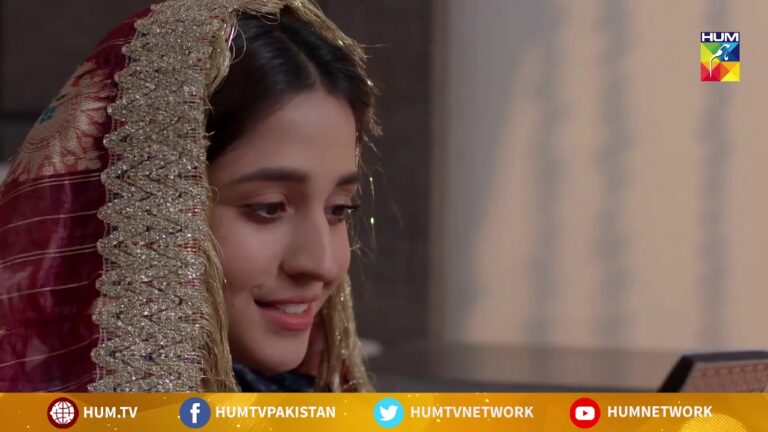Tum Kahan Jao Gy Drama Review: Tum Kahan Jao Gy (Where Are You Going?) is a captivating drama that weaves a tapestry of love, loss, forgiveness, and the enduring power of human connection. This review delves into the show’s intricate plot, compelling characters, and its exploration of complex social issues.
A Story of Second Chances
The narrative centers around Mahira (played by **) and Zaroon (played by **), two individuals whose lives become intertwined by fate. Mahira, a strong-willed woman burdened by a past betrayal, finds solace in her independence. Zaroon, a charming yet flawed individual, harbors his own regrets. When their paths collide, an unexpected connection sparks, offering them a chance at love and redemption. However, their journey is fraught with challenges as past secrets and societal pressures threaten to tear them apart.
Characters: A Spectrum of Emotions
The drama’s strength lies in its well-developed characters. Mahira is a compelling protagonist. Her journey from heartbreak to cautious hope resonates with viewers who have experienced love’s disappointments. Zaroon’s portrayal as a man seeking to rectify his mistakes evokes a sense of empathy. The supporting characters add depth to the narrative. Mahira’s family provides a source of unwavering support, while Zaroon’s family dynamics introduce layers of conflict and complexity.
Love’s Battles: Forgiveness and Sacrifice
Tum Kahan Jao Gy tackles the complexities of love, particularly the challenges of forgiveness and sacrifice. Mahira’s struggle to trust again after a devastating betrayal forms a core theme. Zaroon’s unwavering love compels him to make difficult choices, highlighting the sacrifices one makes for true love. The drama doesn’t shy away from portraying the complexities of relationships, showcasing the importance of communication, honesty, and the power of forgiveness.
Societal Pressures and Hidden Truths
The narrative delves into the impact of societal pressures on individual choices. Family honor, social standing, and economic disparities create obstacles for Mahira and Zaroon’s relationship. The drama sheds light on the hypocrisy within certain social circles and the courage it takes to defy them. Additionally, the show explores the consequences of hidden truths, highlighting how past secrets can resurface and disrupt seemingly stable lives.
Loss and the Path to Healing
Tum Kahan Jao Gy portrays the profound impact of loss, showcasing how it can shape individuals and their relationships. The characters grapple with grief, guilt, and the struggle to move forward. The drama offers a poignant portrayal of the healing process, emphasizing the importance of support systems and the resilience of the human spirit.
Finding Redemption: A Journey of Self-Discovery
Through their challenges, both Mahira and Zaroon embark on journeys of self-discovery. They learn valuable lessons about forgiveness, letting go of the past, and embracing new beginnings. The drama’s conclusion, while avoiding predictability, offers a message of hope and redemption. It leaves a lasting impression, prompting viewers to contemplate the importance of personal growth and the courage to make amends.
Beyond Entertainment: A Spark for Change
Tum Kahan Jao Gy’s impact extends beyond mere entertainment. It sparks conversations about social issues like societal expectations, the importance of communication in relationships, and the courage to challenge social norms. The drama’s portrayal of strong female characters like Mahira who defy societal expectations can be particularly inspiring.
Tum Kahan Jao Gy offers more than a captivating love story. It presents a nuanced exploration of social issues, complex characters, and symbolism that enriches the viewing experience. Here’s a deeper dive into some of these elements:
Social Commentary:
- Class Divide: The drama portrays the challenges faced by couples from different socioeconomic backgrounds. Mahira and Zaroon’s relationship highlights the social barriers that can hinder love and happiness.
- Importance of Communication: The narrative underscores the importance of open communication in relationships. Misunderstandings and hidden truths create significant hurdles for Mahira and Zaroon, emphasizing the need for honesty and trust.
Symbolism and Visual Storytelling:
- Recurring Motifs: The drama employs recurring motifs to convey emotional states. Rain might symbolize cleansing and a fresh start, while closed doors could represent obstacles and hidden secrets.
- Use of Costumes and Colors: The clothing choices of the characters can hold symbolic meaning. Mahira’s wardrobe might transition from muted tones reflecting her past to brighter colors symbolizing hope as she moves forward.
- Juxtaposition of Settings: The contrast between settings can highlight the characters’ internal conflicts. Lush green spaces might represent freedom and growth, while sterile corporate environments could symbolize societal constraints.
Character Complexity:
- Shades of Grey: The drama avoids portraying characters as simply good or bad. Mahira’s past choices might influence her present actions, while Zaroon’s charm can mask underlying flaws. This complexity makes the characters more relatable and the narrative more engaging.
- Character Growth: Both Mahira and Zaroon undergo significant transformations throughout the story. Mahira learns to forgive and embrace love again, while Zaroon strives to be a better person. This growth keeps viewers invested in the characters’ journeys.
Enduring Relevance:
- Universal Themes: While set in a specific cultural context, Tum Kahan Jao Gy’s themes of love, forgiveness, societal pressures, and self-discovery resonate with viewers across cultures and generations.
- Timeless Questions: The drama compels viewers to ponder timeless questions about trust, the importance of family, and the courage to rewrite one’s destiny. These questions spark conversations and introspective journeys that remain relevant even today.
Further Exploration:
To fully appreciate Tum Kahan Jao Gy’s richness, consider delving deeper:
- Social Context Research: Explore the social and cultural norms of the time period the drama is set in. This can provide a deeper understanding of the characters’ motivations and the societal pressures they face.
- Character Analysis: Each character in Tum Kahan Jao Gy has their own unique backstory and motivations. Analyze their actions, dialogues, and interactions to gain a richer understanding of their personalities and their roles in the narrative.
- Symbolism Exploration: Pay close attention to recurring symbols and motifs throughout the drama. Consider their possible meanings and how they contribute to the overall themes and the emotional impact of the story.
A Review, Not a Conclusion
Tum Kahan Jao Gy is a captivating drama that lingers in the mind long after the credits roll. It is a compelling narrative that explores the complexities of love, loss, and the human condition. This review has hopefully provided a glimpse into the show’s intricate plot, its well-developed characters, and its enduring themes. However, the true beauty of Tum Kahan Jao Gy lies in experiencing its emotional journey firsthand. So, if you haven’t already, embark on this captivating exploration of love, forgiveness, and the enduring strength of the human spirit.










+ There are no comments
Add yours